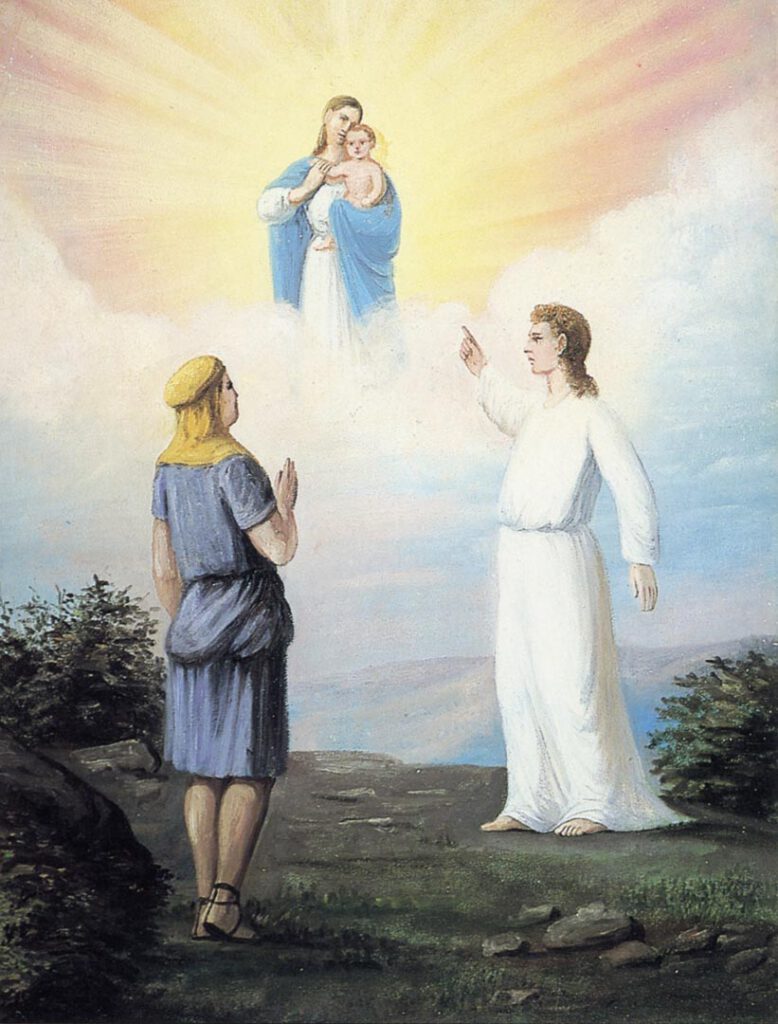
We can learn more about God’s plan for us by studying the visions of prophets. In Revelation, John recorded a message from an angel and a highly symbolic vision. The revelation offers comfort as well as direction and indicates future events.
Nephi also had a grand vision of God’s plan and future events. A heavenly messenger spoke to Nephi and guided him through the vision. The visions of both John and Nephi center on the Lamb of God. John saw multitudes worshipping Christ and saying, “Blessing, and honour, and glory, and power, be unto him that sitteth upon the throne, and unto the Lamb for ever and ever” (John 5:13). Nephi, in seeking to understand his father’s dream of the tree of life, was shown a vision beginning with the mother of the son of God bringing forth “the Lamb of God” (1 Nephi 11:15-23).
The early Latter-day Saint artist C. C. A. Christensen depicted this moment in “Nephi’s Vision of the Virgin and the Son of God.” The painting was part of a series of 10 Book of Mormon images done by Christensen in 1890. The images were serialized in the Juvenile Instructor in 1891 and made into lithographs by the Deseret Sunday School Union for use by Sunday School teachers. The painting is owned by the Church History Museum and is sometimes displayed at the Grandin Bookstore at the Palmyra historic site. As one of the earliest artists to visualize the Book of Mormon, Christensen drew on traditional European religious art motifs in his depiction of Mary and Jesus. But Christensen added unique Latter-day Saint symbolism, such as the wingless angel standing firmly on the ground with Nephi.
-Jenny Champoux, Director